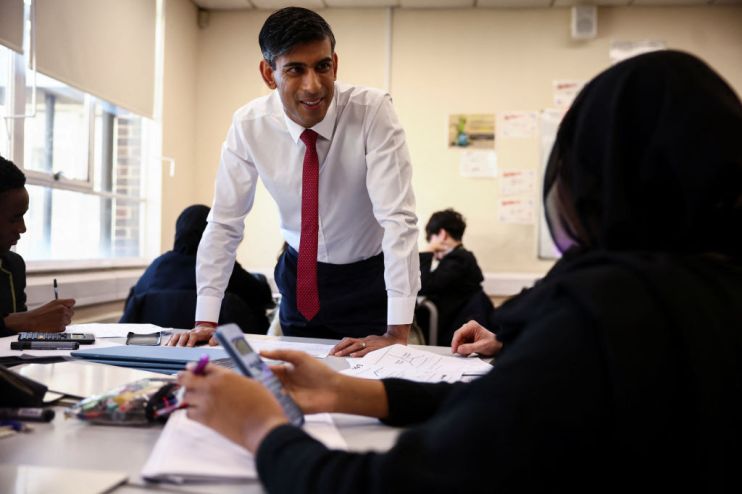Sunak is right. If more Brits could do maths our economy might just start growing again

Sunak’s understanding of maths was an important strength during his time as Chancellor. He is right in promoting a model for education that focuses on improving numeracy skills, writes Paul Ormerod
According to Rishi Sunak, everyone up to the age of 18 should be learning maths. It was an idea widely disparaged when the prime minister laid out his plans for the year ahead. But it is essential at all levels of society.
It was during the pandemic that we saw the importance of having a Chancellor who understands mathematics. He was one of the few able to wrestle with the scientific modellers and acknowledge the multiple trade offs of shutting our economy.
Most of the Cabinet at the time – and, to be fair, this seems true of most historic Cabinets – were by and large innumerate. Prime Minister Boris Johnson was notorious for the glazed look which spread across his features when presented with a slide containing any numbers at all.
The basic principles of epidemic modelling can be understood from a simple set of ordinary differential equations, the so-called Susceptible-Infected-Removed (SIR) model. Of course, for many of Sunak’s arts graduate colleagues, the previous sentence might just as well be written in Tibetan or Sanskrit.
Sunak, however, was able to apply himself to the task. And increasingly, the jobs which pay the highest salaries need quantitative skills. You need strong mathematical abilities to understand Big Data and social media. Google, for example, has made its founders unimaginably rich. But the company was formed on a fairly advanced mathematical concept called an eigenvector. The opportunities are there in abundance, but only a minority has the skillset to take real advantage of them.
Yet it is at the opposite end of the ability range where the real problems lie. Every few years, the OECD measures young people’s skills across the globe with the International Student Assessment (PISA) tests. It focuses on those essential to modern society, including – quelle surprise – maths.
In the latest set of results, published in 2018, over half a million students from 72 countries were measured, looking not just at memorised answers but how well young people can extrapolate and apply their knowledge.
In the UK, our mathematical skills have seen some marginal improvement. In the 2015 PISA research, we scored just below the OECD average in maths, and in 2018, British students were slightly above the average.
At the top level, out of six, students “are capable of advanced mathematical thinking and reasoning…they can apply this understanding to develop new approaches and strategies for attacking novel situations”.
The UK does reasonably well at the top two tiers, with 13 per cent in these categories. Even so, we are left in the dust by East Asian countries such as South Korea and Singapore.
But as the OECD tactfully puts it “81 per cent of students in the United Kingdom attained Level 2 or higher in mathematics”. Tactfully because this means 19 per cent are in the bottom level. This means students may not be able to understand price labels in shops, let alone calculate a percentage.
Even level 2 is not much to write home about. At this level students can perform tasks such as converting prices into a different currency or comparing the total distance across two alternative routes. They struggle with anything harder.
There is an entirely separate question as to how it can be that young people emerge from over a decade of state education with such low numeracy skills. But at least the Prime Minister knows his own times tables, and understands the problem at hand.
